The Redfish Wiggler
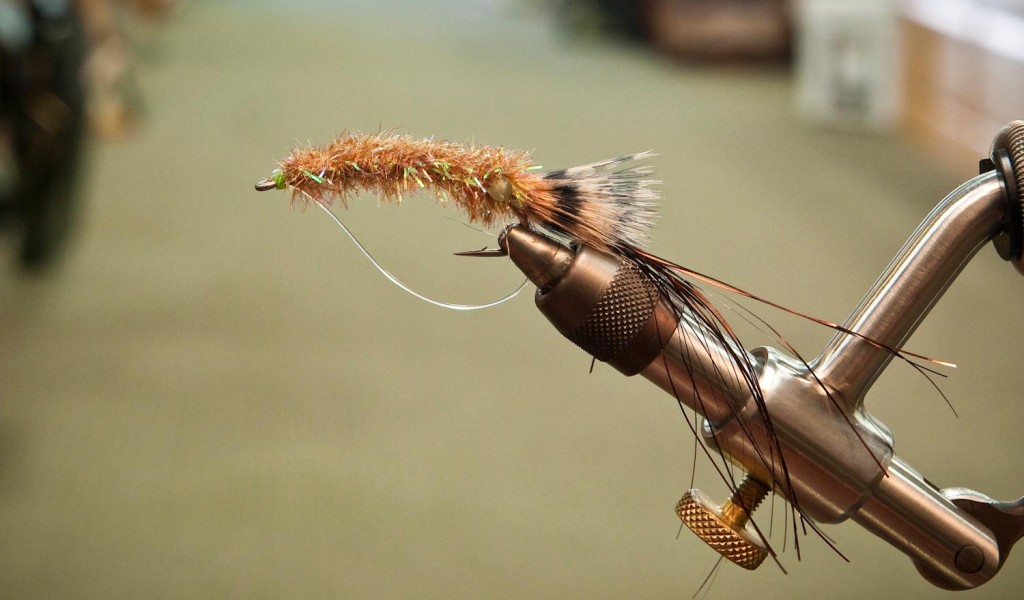
MY BUDDY PAUL PUCKETT IS BEST KNOWN FOR HIS BEAUTIFUL PAINTINGS OF FISH AND HIS FUNNY RENDERINGS OF CELEBRITY’S HOLDING FISH.
What you may not know about Paul is that he’s a redfish junky. So much so that he recently moved to Charleston SOuth Carolina to be closer to the fish he loves.
I visited The Fish Hawk the other day and Paul took the time to share one of his favorite redfish flies. If you’re headed to redfish country tie a few of these babies up. You won’t be sorry.
CHECK OUT THE VIDEO!
Read More »10 Successful Subsurface Trout Flies for the Dead of Winter
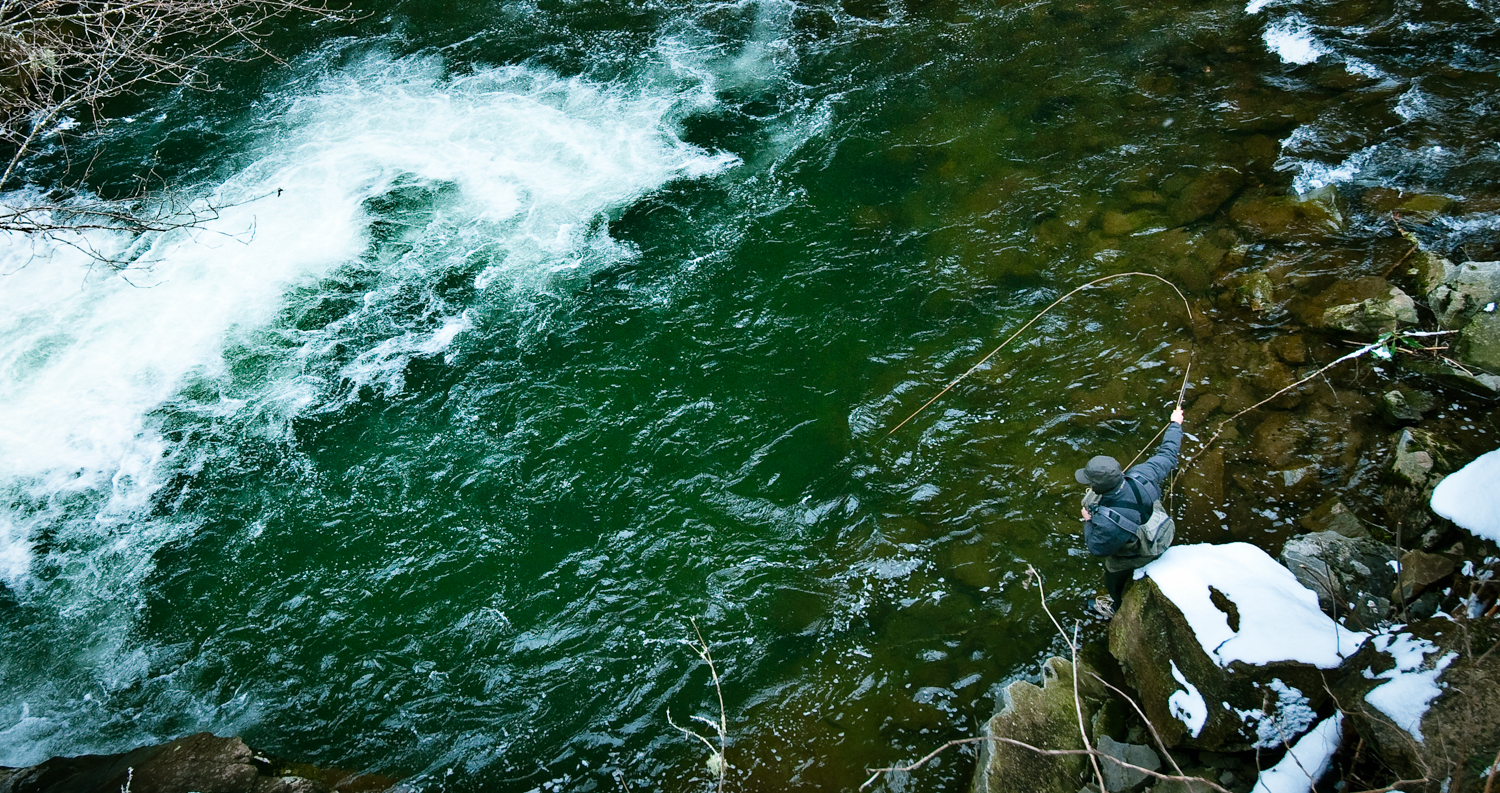
By Bob Reece
As winter provides its deepest chills, most surface activity fades.
Food items for trout become almost strictly subsurface and the size of those offerings in the drift typically decreases. There are currently a plethora of subsurface patterns available in the world of fly fishing for trout. This list is not intended to look down on or exclude any in particular. It is however, made up of patterns that have consistently brought fish-to-net during the winter months and beyond.
Pat Dorsey’s Top Secret Midge:
The Top Secret Midge is Pat’s go to small midge for tough trout. The slim profile, realistic segmented body and emerging wing produce a life-like midge emerger. It is tied on a Tiemco 2488 which increases its hook-ability especially in small sizes. He ties the Top Secret down to a size 26 and it’s my go-to bug in the winter months. The Glamour Madeira wing adds a dash of flash which attracts nearby fish.
Landon Mayer’s Mini Leech:
Landon designed the Mayer’s Mini Leech to match the small freshwater leeches that trout feed on in freestone rivers, tail waters, and still waters. With the micro pine squirrel attached only near the eye of the hook, the extending material will constantly move in addition to the ostrich herl collar. This fly is also versatile in different disciplines; you can dead drift it as a nymph, swing it as a nymph, trail it behind a larger streamer using a strip retrieve.
Casey Dunnigan’s Clearwater Emerger:
Dunnigan’s Clear Water Emerger was designed for the spring and fall transitional phases from baetis to midges and vice versa. With that in mind, the glass bead on this fly was designed to cover the other transitional phase of emergence in both mayflies and midges. This fly is tied in a size range of 18-22. Casey most commonly fishes the size 22 as midges are very small and that broadens the chances of catching more fish. It is a very effective pattern throughout the year.
Pat Dorsey’s Mercury Midge:
The Mercury Black Beauty is a variation of Pat’s original Black Beauty that surfaced in the early 1990’s. The Mercury version incorporates a glass bead that simulates the gas bubble affect in emerging midges. The bead becomes a trigger and entices fish to eat it as a result of the luster in the thorax area, which imitates the trapped air in the thorax. It fishes well in a wide range of sizes from size 18-24.
The Masters of Hyperbole
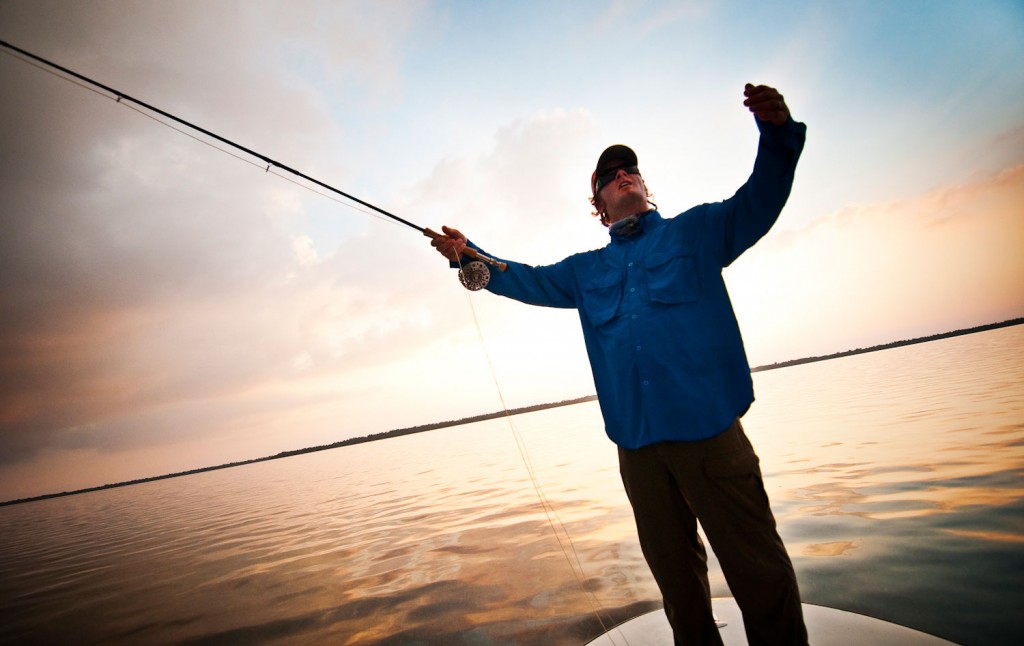
“ARE THERE JUST A BUNCH OF LIARS AMONG US?”
Hyperbole (hahy-pur-buh-lee) noun – An obvious or intentional exaggeration. An extravagant statement or figure of speech not meant to be taken literally, as in “to wait an eternity.”
Christmas or Thanksgiving, when I was a child, were about the only times I saw my Grandfathers together in the same room. Both events involving some turkey, green bean casserole and several desserts, after which there would be some considerable recuperation. The latter part of this recuperation period was something I always eagerly awaited. After a half hour or so of digestion the conversation would inevitably turn to hunting dogs. Why, you might ask, would a young boy be so excited about listening to two old men talk about hunting dogs? You see, this was no normal dog talk, and the dogs these two had in mind, no normal hounds. These dogs were worthy of Homer. These, my friends, were the dogs of legend.
This is how it would start.
“You know Abe, I had this dog once,” Pete, my paternal Grandfather, would lob a volley across the living room at my Mother’s Father.
“He was such a good dog that one time he was jumping a barbed wire fence and just as he crossed the top of that fence he smelled some birds.” To add an air of authenticity his voice would become excited as he continued, “damned if he didn’t stop, right there, perched on that strand of barbed wire in a perfect point!”
Abe, short for Adolphus who preferred to be called Bill, would field this with the nonchalant air of a major league ball player playing catch with a school boy.
“Yeah, that’s a pretty good dog, but I had a dog once, Mike was his name,” and the game was on.
“Mike found a covey of birds roosting in a pile of rocks. Well, he was so smart, he put his paw over the hole in the rocks and let those birds out one at a time so I could kill them all.”
There was no end to how long this could go on. The two of them would banter back and forth for hours, every story more fantastic than the last. The stories were full of vivid detail and emotion as if they had happened yesterday. They stitched a rich and beautiful quilt with detailed appliqué of dogs I’d never known and some that likely never existed at all. They were masters and it was beautiful to watch. To this day, I see a bird dog and I am filled with wonder. I think, that dog might be capable of anything.
Not long ago Rich Hohne and I went tarpon fishing with my buddy Joel Dickey. Rich grew up in Los Angeles and has spent much of his adult life in Montana. He and I became friends through fishing and he hasn’t spent a lot of time in the South. I sometimes forget
Read More »Get A Better Grip On The Spey Rod
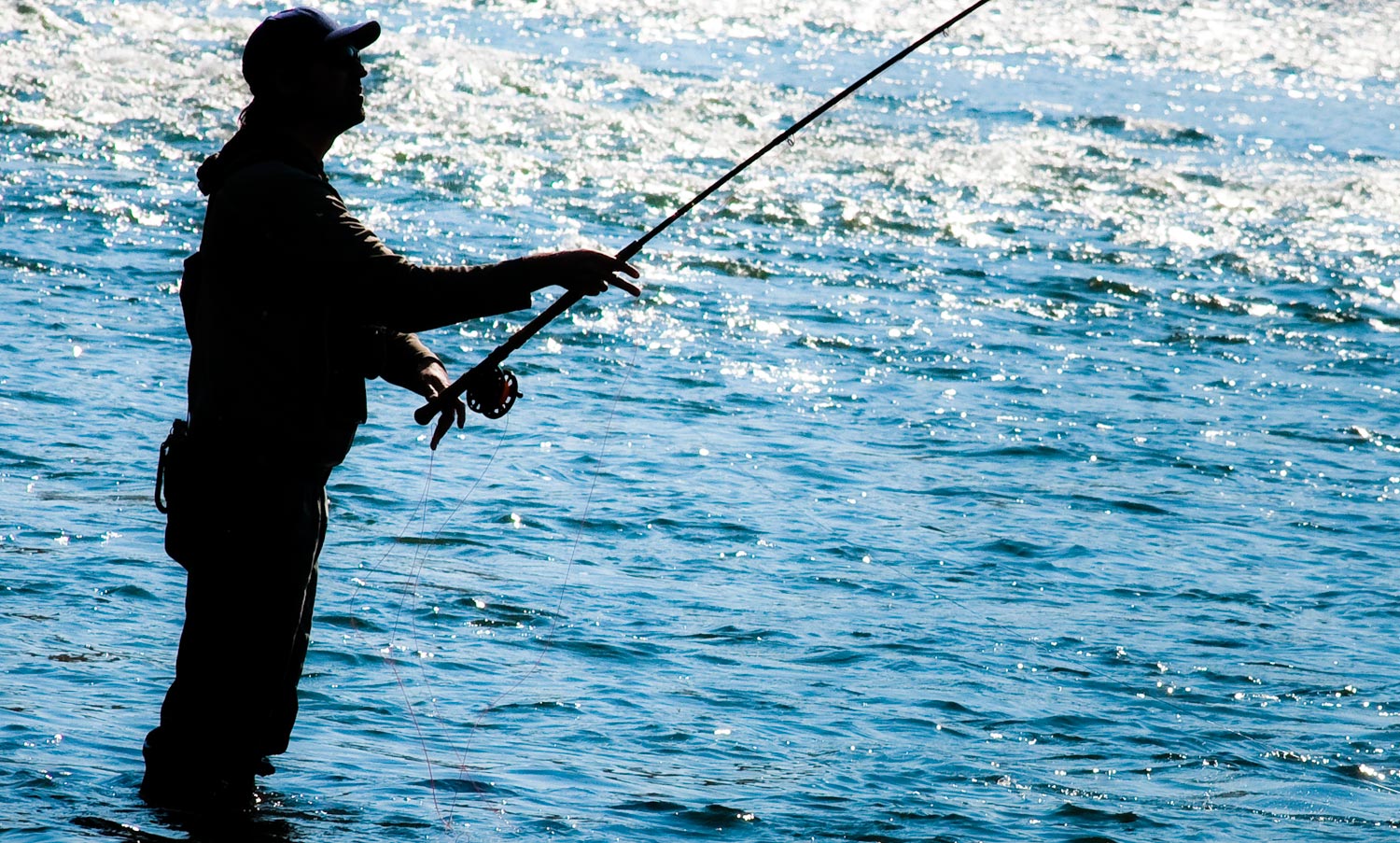
ALL FLY CASTING IS ABOUT CONTROL AND TIMING, NOT POWER.
This is never more true than in Spey casting. Perhaps because there are more moving parts to a Spey cast, rod and line control are crucial. This is especially challenging for the beginner whose muscle memory is only just developing. Often a cast will “break” for no reason. That is to say that, all of a sudden that double Spey you’ve been throwing all morning just doesn’t work any more. Often the reason is a loss of control.
Here’s a tip that will help those of you who are new to two-handed casting maintain control. The first step in a controlled cast is the proper grip. It’s something that doesn’t get talked about enough. Most anglers who are new to the Spey rod think of it like holding a golf club or baseball bat. A familiar tool for most of us, but the Spey rod is quite different and so is the proper grip.
Hold the rod with your finger tips. A gentle grip is all that’s necessary. Using your fingertips accomplishes two things. It keeps your arms relaxed, as you are not tempted to put a death grip on the rod. A relaxed posture is important for fluid movement. Gripping with your fingertips also engages a different set of muscles. Muscles, which are tuned to fine motor skills like writing.
The result is a casting stroke that
Read More »The First Ten Seconds
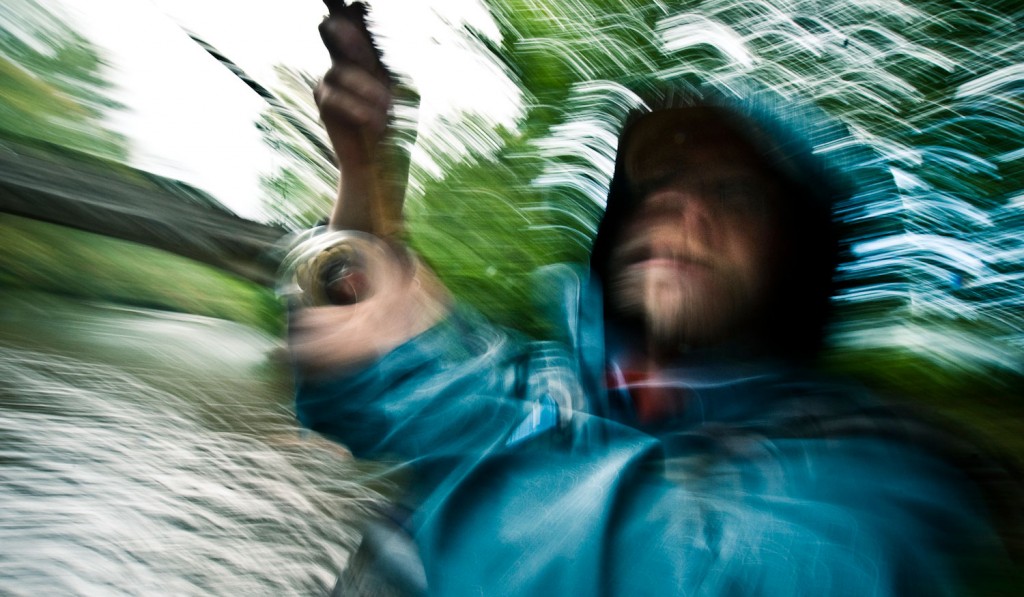
Chaos and panic are good words to describe what goes through many anglers heads during the first ten seconds following a big fish hookup.
The decisions you make during those first seconds of the fight will often determine whether you or the fish wins the battle. There’s lots of ways to lose a big fish and sometimes it’s completely out of your control. But one of the worst decisions you can make, specifically when a fish is making a screaming run upstream or downstream of you, is deciding to stay put and not follow. When this happens you better be ready to kick it into high gear and move your ass fast in pursuit. Otherwise, you’ll quickly find yourself with no leverage to apply adequate power to fight and steer the fish. It’s like trying to drive a car on a curvy road without a steering wheel, it’s just not going to work.
Big trout usually only have a couple really long hard runs. If you can stick with them during the blitzing runs and keep good tension, you’ll often find the hardest part of the fight is
Read More »Tarpon On The Four Weight
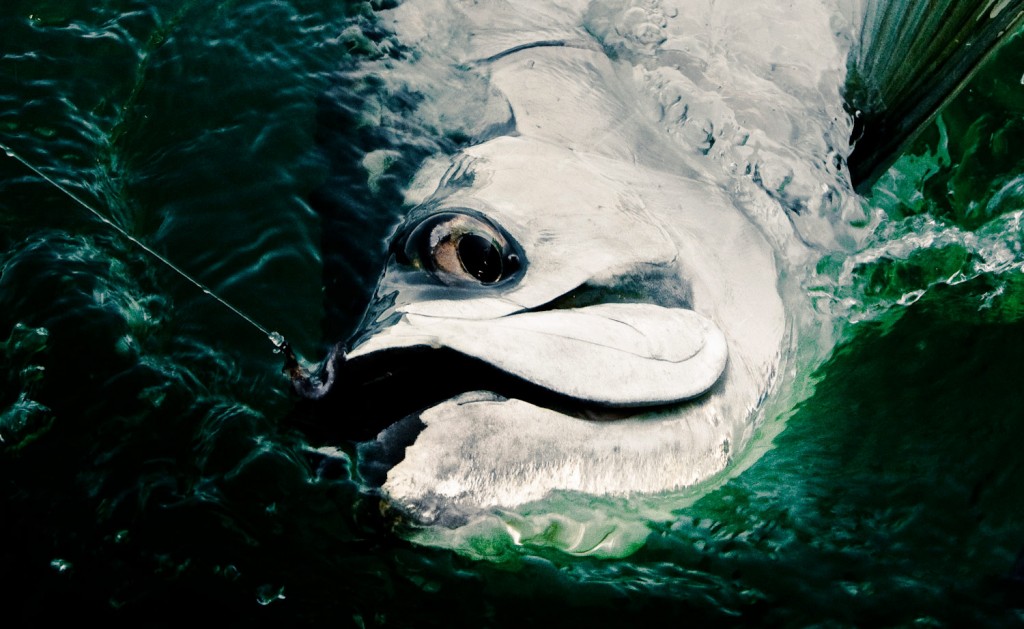
LET ME BE CLEAR ON THIS…I AM NOT A DUMB ASS. WELL, AT LEAST NOT A BIG ENOUGH DUMB ASS TO TRY AND CATCH A TARPON ON A FOUR WEIGHT.
But I did buy a new four weight reel the other day and a ten weight line. So I sat down to line up the two reels, which is my cat’s favorite thing in the world, and something occurred to me. I rig my four weight for tarpon. What I mean by that is that I use the same system for attaching my fly line to the backing that I learned when I started saltwater fly fishing.
Before I started fishing salt I attached my line to the backing with a nail knot, like I learned to as a kid. Now I spend a lot more time whipping a loop on the back of my fly line with tying thread and superglue. Then I spend even more time tying a double Bimini twist in my backing and connecting loop to loop. But why?
Well, it’s clearly a stronger connection but do I need that on a four weight trout rod? It sure doesn’t hurt when you find yourself connected to a ten pound trout on your four weight. You will be seeing that backing, I promise. Still, it’s clearly overkill. It comes back through your guides smoother and that’s nice, but still not a big deal. Here’s my reasoning, and this is why I use this method on all my reels.
Read More »Spring Fishing on Tributaries for Wild Trout
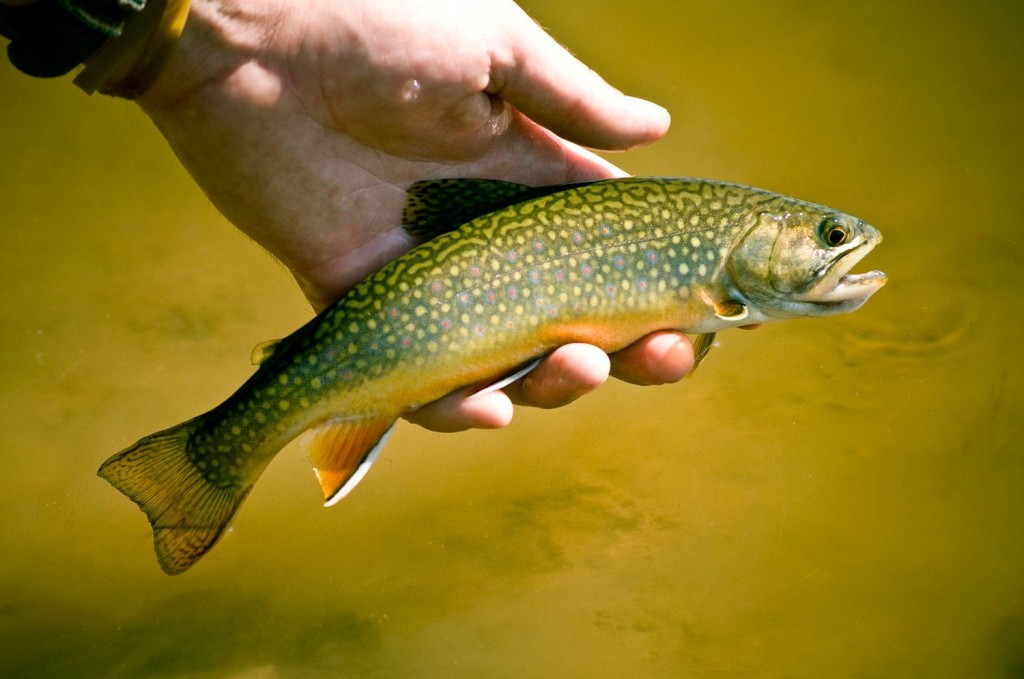
Several of our blog followers on numerous occasions have asked Louis and I if we ever catch small trout?
Jokingly, they mention, “All we see are trophy size fish in most of the pictures on the blog”. I assure you all, we catch plenty of small fish, and Louis and I both appreciate and photograph them on the water with the same gratitude and respect. It’s just fair to say, that a large portion of anglers out there are constantly striving to catch a trophy class fish. We tend to use our big fish photos as motivation and assurance that persistence pays off. However, it’s important to note, in most cases, there’s no distinction in our fishing technique. We pretty much fish the same way for all sizes of trout. We approach the fishing spots the same, we make the same casts and presentations, and we fish the same fly patterns. It really just boils down to whether or not it’s a numbers day or a big fish day, and we’re generally happy with either. Location does play a factor though for size of trout, but remember, a trophy fish should be defined by the water it inhabits. A 14-inch trout on a small creek has just as much right to hold the trophy status as a 20-inch fish on a big river.
Right now we’re well into the Spring fishing season. Water temperatures are warming, multiple species of bugs are hatching, and trout are really happy and aggressive with their rising metabolisms. There’s really no
Read More »Get the Most Out Of Your Fly Reel
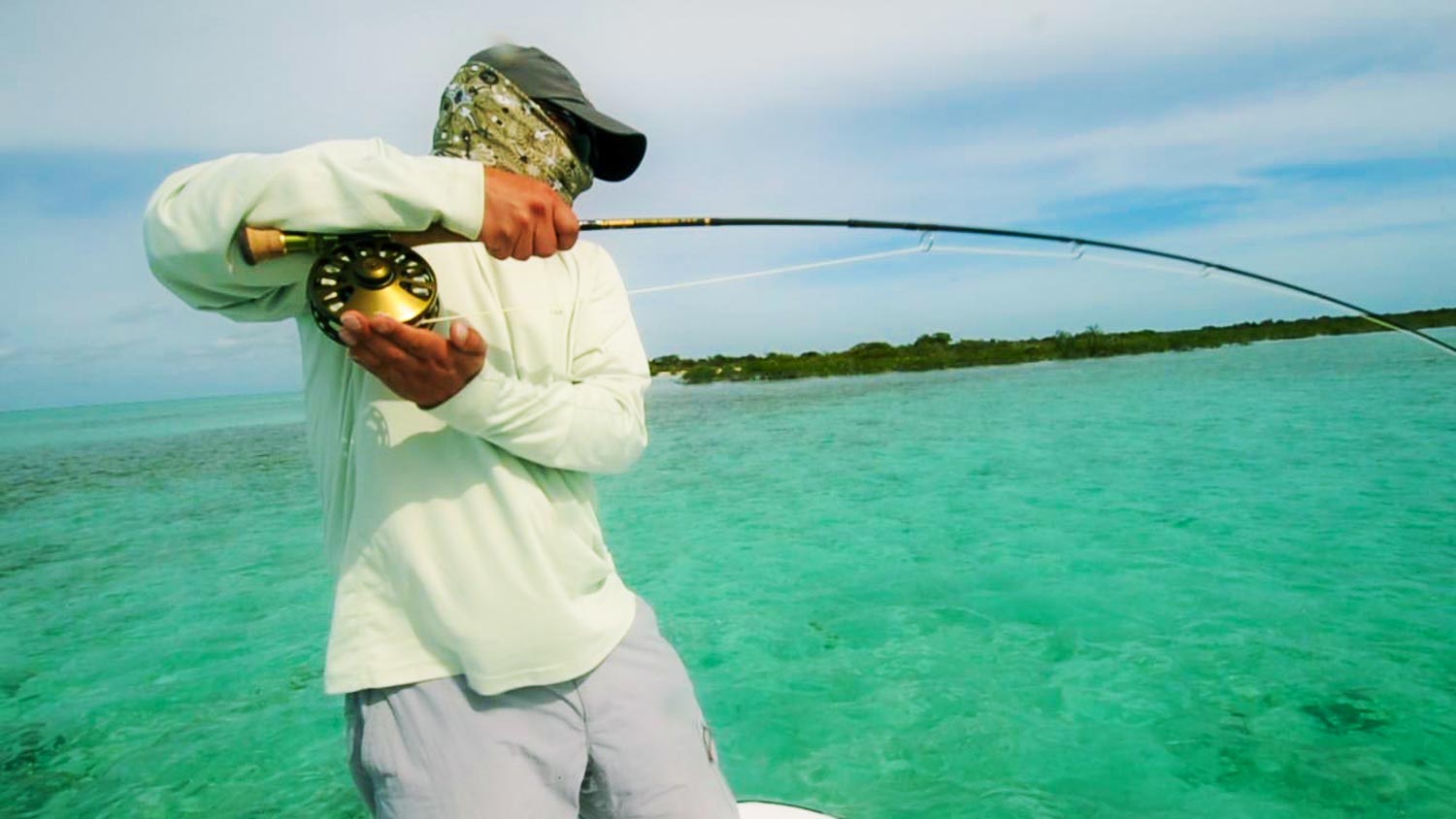
Odds are, you paid good money for that fly reel, don’t let it go to waste.
One of the most common fish-fighting mistakes anglers make is not making good use of the reel. I see this most commonly in anglers who are making the transition from freshwater to salt, but it exists in all types of fly fishing. Well, maybe not tenkara.
Most modern fly reels have drag systems, which are both powerful and precise. In the old days, fly reel drag did little more than help prevent backlash, but today’s reels are effective fish-fighting machines designed to land fish efficiently. Once you have a feel for using a fly reel, you’ll find that you land more fish and land them quicker.
There are basically two things you need to know about fighting fish with a fly reel: how tight to set the drag and how to fight a fish with the given drag setting. Before I dive into the technical stuff, I will touch on a few basics for those who are completely new to the sport. If you are an advanced angler, skim over the next three paragraphs.
Unlike spinning reels, fly reels are direct drive reels. This means that in order for the spool to spin under drag, your winding hand must let go of the reel. I know, that’s dead obvious, but getting the winding hand off the reel quickly when a fish starts to run is a skill new anglers struggle with.
Your fly reel should have two types of line. Your fly line, the weight of which is matched to your rod. This is the line you cast to deliver the fly. The reel should also have backing. Usually Dacron, the backing is attached to the spool and then to the back end of the fly line. This line is there for fighting big fish which make long runs. It is not as strong as your fly line, so be careful not to put too much pressure on a fish when the backing is out or you may lose your fly line. This is important with large species like tarpon. Backing will also cut like a knife when under tension, so don’t touch it during the fight.
Once the reel is mounted to the rod, the line should come off the front of the reel and make a straight line to the first guide, without touching the frame. When you strip line off the reel in preparation for casting, always pull the line out along the rod. Never strip it off the reel with the line in contact with the frame of the reel. This will damage your line and cause it to twist and tangle.
Setting the drag
There are a couple of important things to consider when setting your drag. The most important is
Read More »PUTMBAK!
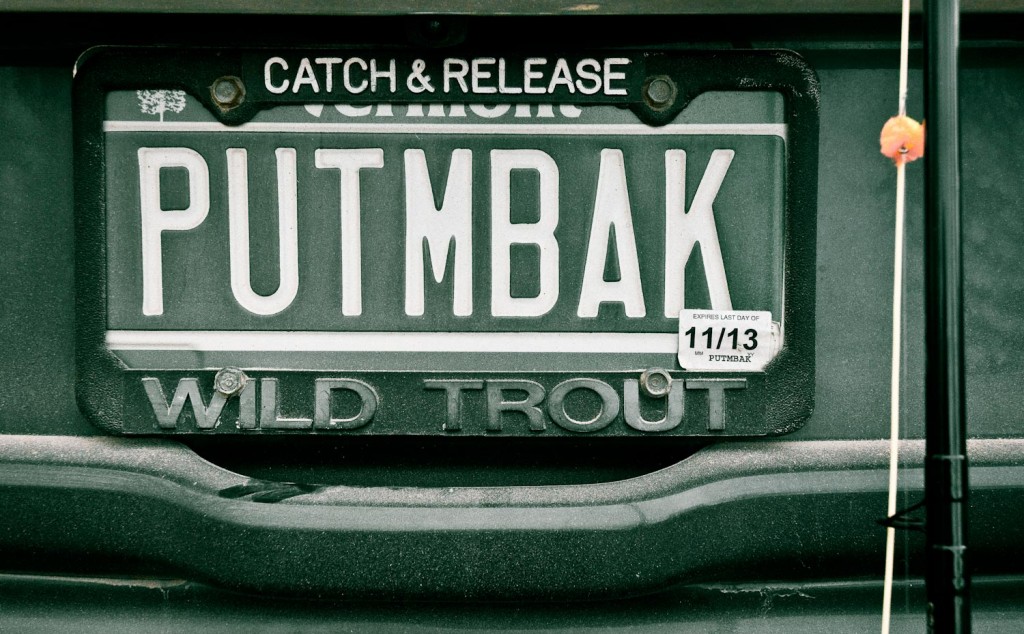
I wonder what the Great Lakes Steelhead would think if he knew what a controversial fish he is.
No, he’s not a native fish. Yes, it’s a completely man made fishery. No, it’s not a wild and scenic experience. Is he a real steelhead? Who cares. I love fishing the tributaries of the great lakes for the biggest toughest trout this side of the Mississippi and so does everyone else who’s tried it. I have to wander though, as I stand in the river with my fly rod watching the horde of bait fisherman stack their catch on the bank, if these fish got the respect enjoyed by their west coast cousins, couldn’t this be a whole lot better? I’m not dogging the fishery, it’s awesome, but it just seems like common sense. It’s true that great lakes steelhead do not successfully reproduce but left in the river they will continue to come back year after year, providing a better
Read More »How Louis Got His Groove Back
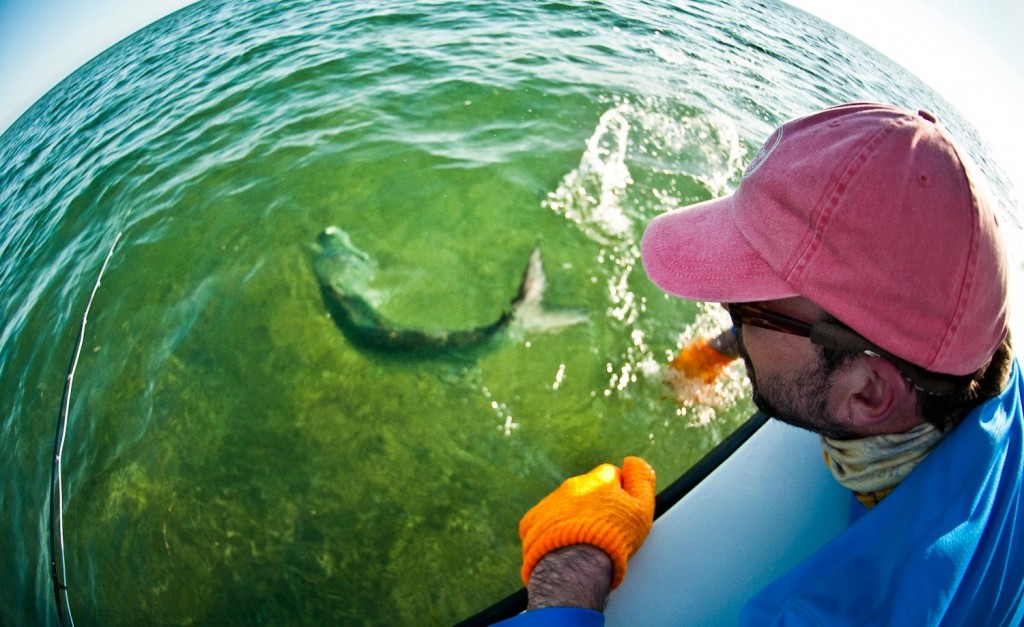
IT’S HARD TO OVERSTATE THE IMPORTANCE OF CONFIDENCE IN FLY FISHING. IT’S OFTEN THE SPECIAL SAUCE ON SUCCESS.
I squint into the sun. My eyes burn from sweat and sun screen. I take a few deep breaths and puff them back out. I stretch my neck side to side, it pops and cracks. I close my eyes for a second, though I know I shouldn’t, I squeeze the cork in my hand and try to slow my heart rate. I open my eyes and I see an army of tarpon. I am loosing my cool.
There must be fifty or sixty fish in this school and plenty of them are a hundred pounds or better. I’ve seen it before but it’s a sight you never get used to. You can easily spend a whole day on a flats boat staring at the water without seeing a fish. I’ve done that too. Moments like this have to be savored and at first I was doing a pretty good job of it but now things are getting weird.
Normally in salt water fly fishing the presentation is what matters. That’s not to say that you don’t need the right fly but it’s not generally like fishing to a educated brown trout who’s only eating the females among the emerging mayflies. Not generally, but this afternoon is different. These fish are being really picky. Normally, you get a shot at a fish and it’s either interested, or it’s not and you are left to wonder why or just assume that fish isn’t eating and move on looking for the next fish. You don’t get the luxury of sitting there and sorting it out. This afternoon we are sitting in the midst of a huge school of tarpon, who are clearly eating all around us, and I have made a dozen good presentations, each to be met with a follow and a refusal. It feels oddly like trout fishing. My buddy Joel Dickey is working thru every fly in his box trying to put me on a fish while we watch tarpon busting the surface all around us. These fish are keyed in on something and we are trying to match the hatch.
It’s hard to overstate the importance of confidence in fly fishing. It’s often the special sauce on success. The thing that gives one angler the hot rod while his buddy fishes the same fly and goes fish-less. I felt real confident when we rolled up on these fish. How could you not? A school of fifty feeding fish, surely you’re going to get one, right? But with each nerve-racking follow and heart breaking refusal my confidence is eroding. My presentations are getting rushed, my casts becoming less and less accurate, my
Read More »